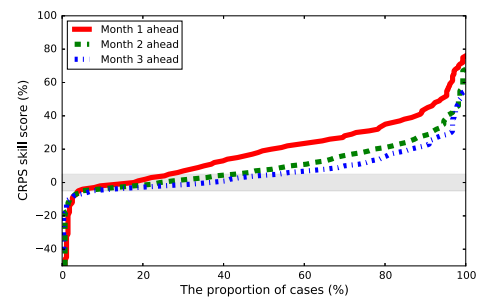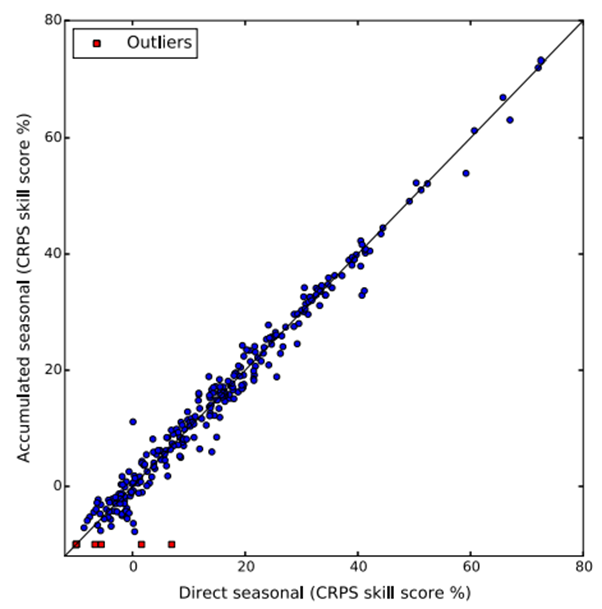Seasonal forecasting methods can also predict shorter-term streamflow

New research shows that statistical methods developed for seasonal streamflow forecasting can also be used to predict streamflow over shorter times.
Good streamflow forecasts allow water management agencies to make better decisions and achieve more efficient water use. Currently, the Australian Bureau of Meteorology provides seasonal forecasts of three-month-total streamflow for over 200 gauging stations around Australia. Forecast users, particularly water management agencies, also require sub-seasonal streamflow forecasts, so that they can better plan short-term water use. Our recent study, conducted at CSIRO, responds to this user need by testing ensemble sub-seasonal to seasonal streamflow forecasting for 23 case study catchments around Australia (Figure 1).
We apply the Bayesian joint probability (BJP) modelling approach to predict monthly streamflow three months ahead. The predictors are one-month antecedent streamflow and climatic indices, including El Niño Southern Oscillation (ENSO) and Indian Ocean Dipole (IOD). In BJP, streamflow and climate variables are first normalised through data transformations. The transformed variables are then assumed to follow a multivariate normal distribution.

Figure 2: Cumulative distributions of skill for month 1, 2 and 3 ahead forecasts
We evaluate the skill of sub-seasonal forecasts relative to a climatology reference. The results show that the month 1, 2 and 3 ahead forecasts are respectively positively skillful (having lower error) in 74%, 57% and 46% of the test cases (Figure 2). The variation of sub-seasonal forecast skill is associated with rainfall seasonality, streamflow variability and catchment geomorphology. As lead time increases, forecast skill reduces and the BJP-generated ensemble forecasts tend towards climatology. The sub-seasonal forecasts are overall reliable in ensemble spread at different lead times.
Seasonal forecasts are obtained by accumulating sub-seasonal forecasts of streamflow in months 1, 2 and 3 ahead. We find that the accumulated seasonal forecasts are reliable and more skilful than climatology forecasts. Further, the seasonal forecasts accumulated from monthly forecasts are in general similarly skillful to direct seasonal forecasts (Figure 3, below).
The BJP modelling approach is an integral part of the Bureau’s forecasting system to generate seasonal streamflow forecasts. We have demonstrated the potential of BJP to produce reliable and skilful sub-seasonal forecasts. Our sub-seasonal forecasting work will be incorporated into the Bureau’s system to provide informative sub-seasonal forecasts for water management.
Article: ‘Ensemble forecasting of sub-seasonal to seasonal streamflow by a Bayesian joint probability modelling approach’, Tongtiegang Zhao, Andrew Schepen, Q.J. Wang, Journal of Hydrology. doi: 10.1016/j.jhydrol.2016.07.040. in press.


